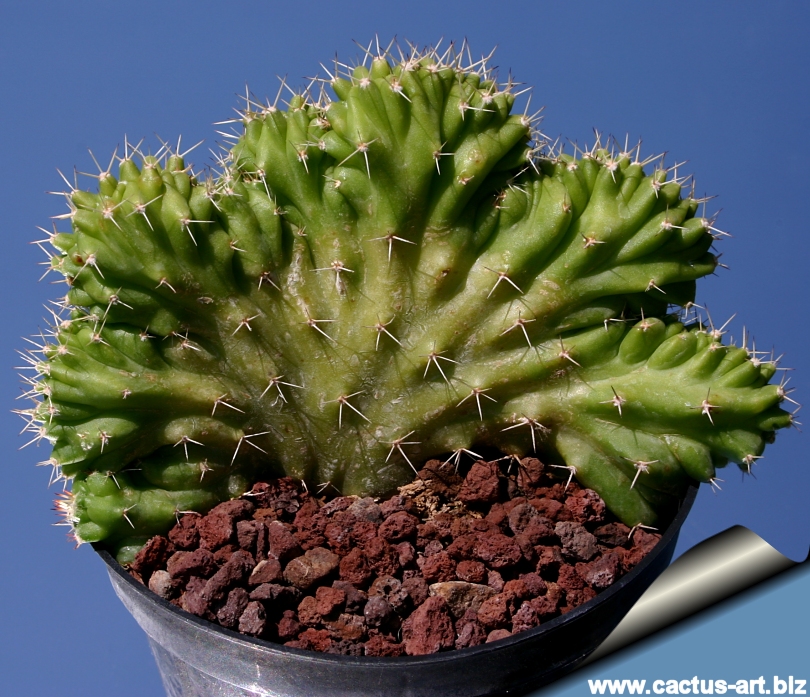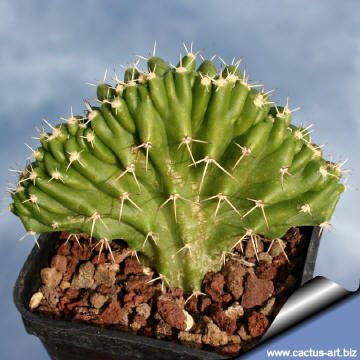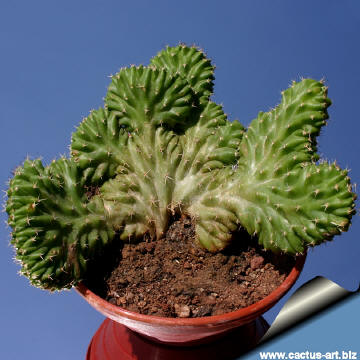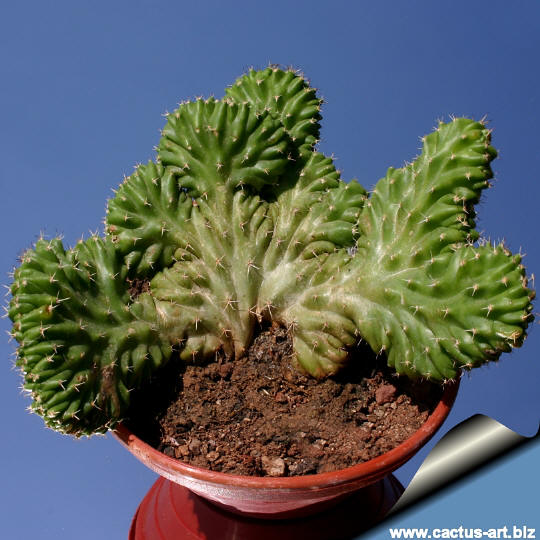|
|

Echinocereus pentalophus forma cristata
|
|
Description: The typical
Echinocereus pentalophus is a well known and widely grown
clumping cactus that form large cushion. The crested form is not so
easy to found as the normal plant.
Stems: Light green to reddish-purple to dark or
yellowish-green. The
crested stems are relatively weak, up 2.5 cm in width .
Central spines: 0 or 1 central spine;
Radial spines: 4 or 7,
short, brown,
yellowish, tan or ashy white,
usually very stiff and straight.
|
|
 |
 |
|
Photo of conspecific
taxa, varieties, forms and
cultivars
of
plants belonging to the
Echinocereus pentalophus
complex
(This
Taxon has lots of
synonyms (like most Echinocereus) with several
controversial varieties and subspecies):
Advertising
|
|
|
|
|
|
|
Family:
Cactaceae (Cactus
Family)
Scientific name:
Echinocereus pentalophus
(DC.) Lemaire.
in:
Cactées, 56 (1868)
forma
cristata
Origin: Garden origin (Nursery
produced cultivar)
Conservation status: Listed in
CITES appendix 2.
Common Names: Crested Lady Finger Cactus, Crested
Dog Tail.

|
|
|
|
Cultivation:
The crests are frequently grafted onto a
Myrtillocactus
geometrizans trunk, but are easily grown on their own
roots. Indicated
for full sun exposure. Water
regularly from March to October. Rot prone in winter, it needs good
drainage, It should be kept in a cool place
during winter rest (it can
briefly tolerate temp. as low as -7°C). Stems
may possibly become purple and limp in winter, but revitalize in early
spring. Any normal shoots should be removed to promote the
growth of the crest. Propagation: Grafting, It can also be increased by cuttings, which will take root in a
minimum temperature of 20° C. Cuttings of healthy shoots can be taken in
the spring and summer, Cut the stem with a sharp, sterile knife, leave
the cutting in a warm, dry place for a week or weeks (depending on how
thick the cutting is) until a callus forms over the wound. Once the
callus forms, the cutting may be inserted in a container filled with
firmed cactus potting mix topped with a surface layer of coarse grit.
They should be placed in the coarse grit only; this prevents the cut end
from becoming too wet and allows the roots to penetrate the rich compost
underneath. The cuttings should root in 2 to 6 weeks.

 |
|